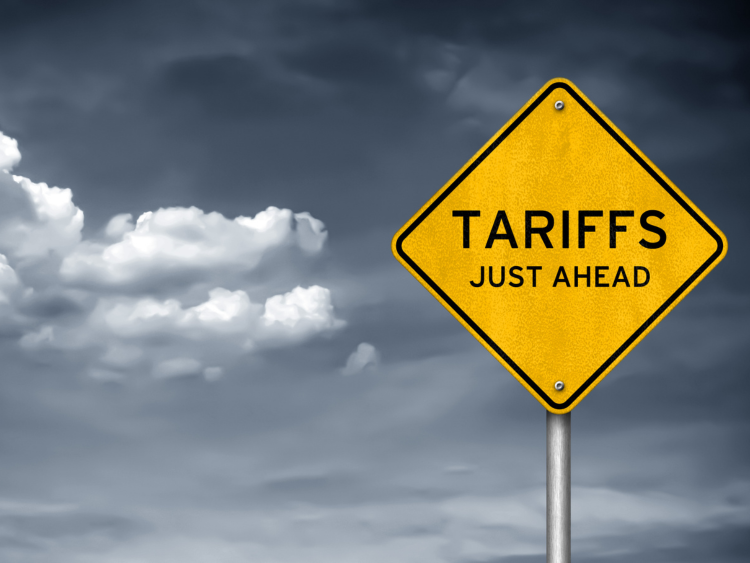Trade Cases

Commerce Posts TRQs for EU Countries: Germany, Netherlands Among Biggest Winners
Written by John Packard
November 29, 2021
The U.S. Commerce Department has released product- and country-specific information on the tariff-rate quota (TRQ) for individual European Union member states.
Among the biggest winners are Dutch hot rolled, Swedish cold rolled, and German plate.
A complete list of quotas for individual steel products and countries is below.
![]() For steel products, click here. Our friends on the aluminum side should click here. We’ll keep our focus in this article on steel.
For steel products, click here. Our friends on the aluminum side should click here. We’ll keep our focus in this article on steel.
By the Numbers
The EU will be allowed to ship 3,331,829 metric tons, or 3,672,708 short tons, of steel to the United States free of Section 232 tariffs. That in theory means that only 918,177 short tons, on average, will be allowed during any one quarter.
Here are some notable numbers for Germany, the largest steelmaking nation in the EU. Germany is allowed to ship 40,280 metric tonnes (44,401 short tons) of hot-rolled sheet annually to the U.S. tariff free, 53,540 tonnes of cold-rolled sheet (59,018 short tons) and 86,221 tonnes (95,042 short tons) of cut-to-length plate.
This is another way to look at the three biggest country-specific quotas for some of the flat-rolled products that SMU prices:
Hot-Rolled Sheet: Netherlands with 122,529 MT (135,065 net tons), Germany with 40,280 MT (44,401 net tons), Belgium with 26,610 MT (29,332 net tons).
Cold-Rolled Sheet: Sweden with 76,750 MT (84,602 net tons), Germany with 53,540 MT (59,017 net tons), Netherlands with 48,120 MT (53,043 net tons).
Flat Products, Hot-Dipped: Netherlands with 49,953 MT (55,063 net tons), Italy with 41,303 MT (45,528 net tons), Germany with 25,444 MT (28,047 net tons).
Plate in Cut Lengths: Germany with 86,221 MT (95,042 short tons), France with 73,869 MT (81,426 short tons), and Italy with 22,470 MT (24,769 short tons).
And remember that existing exclusions to Section 232 for EU steel products will be grandfathered into the new TRQ agreement.
That means there are another 1,109,940.7 MT (1,223,498 net tons) of steel that can come into the U.S. without the S232 tariffs. All told, that means the EU will be allowed to ship 4,441,769.7 MT, or 4,896,207 short tons, of steel products into the U.S. tariff free during calendar year 2022.
The Background
Recall that the tariff-rate quota, or TRQ, an easing of Section 232 tariffs on steel and aluminum imported from the European Union will, go into effect on Jan. 1, 2022.
The EU-wide quota limit will initially be set at approximately 3.33 million metric tonnes (3.67 million short tons) for steel. A 25% tariff will be still applied after the quota limit is reached. The pact also extends U.S. “melted and poured” policies to the EU. The annual TRQ on the EU, like the Section 232 quotas on South Korea and Brazil, will be administered on a quarterly basis
Those broad details were posted by Commerce and the Office of the U.S. Trade Representative (USTR) in late October. The country-specific details in the links above were posted by Commerce on Nov. 18 with little fanfare and have only come to some market participants’ attention recently.
Tampa Steel
We will have a great panel on the EU TRQ, exclusions, and Section 232 in general, at our 2022 Tampa Steel Conference on Feb. 14-16. The panel will be on Wednesday, Feb. 16. You can find out more information about our program, speakers, special networking events, costs to attend, and how to register by clicking here or by going to: www.tampasteelconference.com
By John Packard, John@SteelMarketUpdate.com

John Packard
Read more from John PackardLatest in Trade Cases

Industry piles on new Section 232 steel derivative inclusion requests
The Department of Commerce received 97 submissions from producers, manufacturers, and groups seeking Section 232 tariff coverage for steel and aluminum derivative products.

Price on Trade: New EU steel tariffs don’t mean the US should weaken its stance
Any steel imports into the EU that exceed the new, lower quota level would be subject to a 50% tariff, which represents a major increase from the EU’s current 25% out-of-quota tariff. This move would largely align the EU’s steel tariff rate with Canada and the United States.

Global steel forum sets 2026 framework deadline as US ups pressure on excess capacity
Global steelmakers sounded the alarm Friday over the deepening excess steelmaking capacity crisis. Ministers at the Global Forum on Steel Excess Capacity (GFSEC) in Gqeberha, South Africa, pledged to...

CRU: China’s indirect steel exports find new destination markets
The boom in China’s direct steel exports has not stopped this year, even with a rise in protectionist measures globally. The increase is driven by...

U.S. Steel sues Algoma over iron pellet shipments
U.S. Steel is suing Algoma over the Canadian flat-rolled producer's rejection of iron pellet shipments, arguing it has breached its contract.
